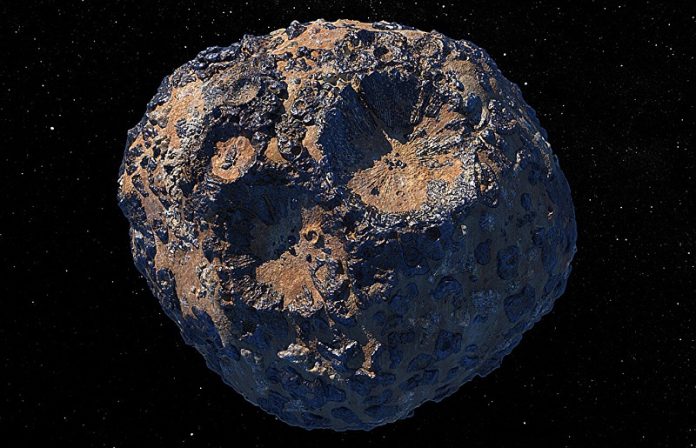
Imagine a rock, floating in space, that’s so full of metal it could be the core of a failed planet!
This isn’t a sci-fi plot, but a real celestial body named Psyche, residing in our very own solar system.
Scientists at the Southwest Research Institute are engaging in a cosmic detective adventure, trying to unravel the secrets this giant metallic rock may hold, utilizing some of the most advanced telescopes available to humankind.
Situated snugly in the asteroid belt between Mars and Jupiter, Psyche isn’t your ordinary space rock.
It’s huge – with a diameter of approximately 140 miles – and is believed to be largely composed of metal.
Picture a world where instead of mountains, valleys, and oceans, you have vast expanses of different metals! That’s Psyche for you, and it’s considered to be one of the most massive entities in the asteroid belt.
So, why is this giant metallic asteroid garnering so much attention from scientists? There are a couple of compelling reasons.
One, it’s thought that Psyche might be the exposed core of a failed planet. Imagine a planet that was in the process of forming, but something went wrong, and all that was left was its metallic core – that could be Psyche.
This hypothesis is not only thrilling but also provides a rare opportunity for scientists to examine what the inside of a planet might look like, given that typically, planetary cores are deeply buried beneath layers of mantle and crust and are thus impossible to study directly.
Secondly, and quite mysteriously, previous observations have hinted at intriguing possibilities – such as variations in its surface composition and even whispers of hydration (water or hydroxyl presence) on its metallic surface.
Dr. Stephanie Jarmak and her team are using the James Webb Space Telescope (JWST) to peer into the cosmos and seek any potential water signatures on Psyche.
Given that the asteroid is predominantly metallic, not finding water wouldn’t be a shock, but if found, it would certainly add a curious twist to the tale.
Moreover, Dr. Anicia Arredondo is drawing from some of the final data accumulated by the Stratospheric Observatory for Infrared Astronomy (SOFIA). The aim?
To study the differences, if any, in Psyche’s composition at various points on its surface as it pirouettes through space.
Arredondo used SOFIA to scan Psyche in infrared, to gain more insight into whether it could be the remains of a differentiated asteroid or a protoplanet. The underlying question being – did multiple impacts strip all the outer layers off, leaving only a solitary metal core behind?
There’s more on the horizon! On October 5, NASA plans to launch a spacecraft aptly named the Psyche spacecraft, which will embark on a staggering 2.2 billion-mile journey to reach the asteroid.
The expected time of arrival? August 2029.
Psyche is not just a celestial body; it’s a treasure trove of questions and potential scientific revelations. Its metallic persona, the variations, and anomalies observed on its surface, and the theories of it possibly being a failed planet’s core make it a target of insatiable curiosity and study.
However, Psyche also appears to be playfully enigmatic, revealing differing results through various observation techniques and keeping the scientists on their toes.
As Dr. Arredondo aptly puts it, the observations using different methodologies continuously showcase results that seemingly defy being neatly placed into a singular coherent narrative. But this enigma is exactly why the upcoming mission to Psyche is pivotal.
It could potentially resolve conflicting observations and reveal the hidden tales encrypted in the vast, metallic landscapes of Psyche, thereby bringing us one step closer to understanding the fascinating tales scripted in our cosmic neighborhood!
Follow us on Twitter for more articles about this topic.



